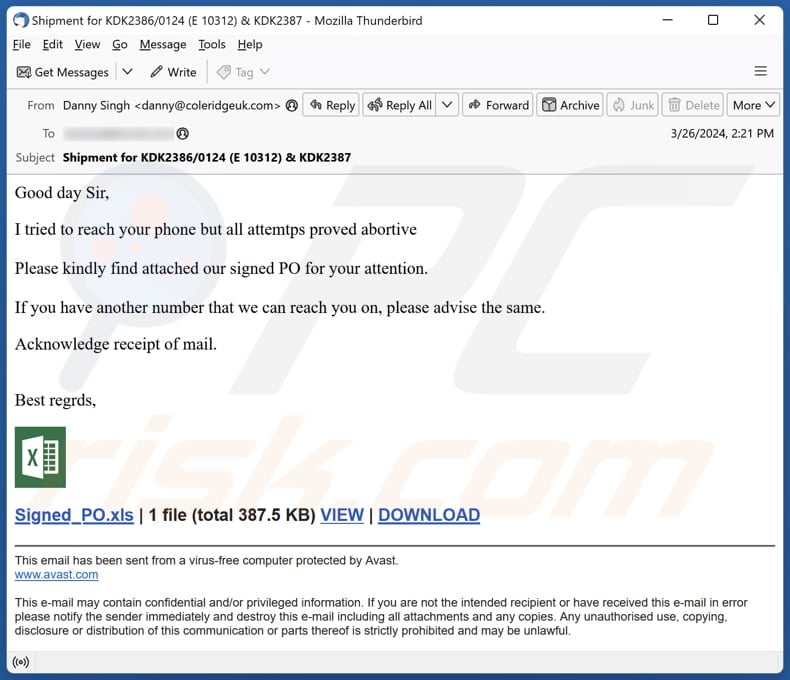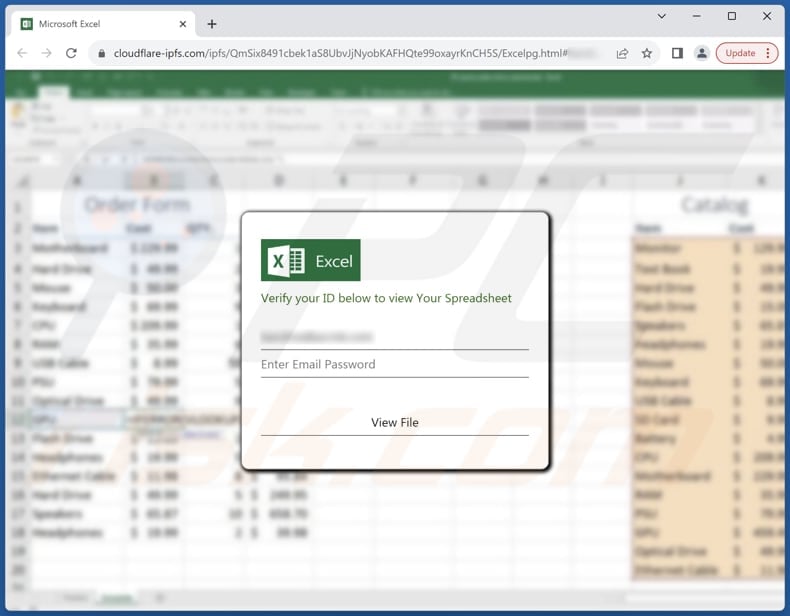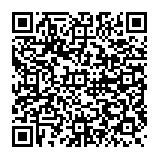How to spot scam emails like "Signed PO (Purchase Order)"
![]() Written by Tomas Meskauskas on
Written by Tomas Meskauskas on
What is "Signed PO (Purchase Order)"?
Upon scrutinizing the email, we identified telltale signs of a phishing attempt. The scammer behind this deceitful email endeavors to entice recipients to click the provided link and divulge personal information. Recipients must exercise caution and refrain from interacting with suspicious links in such emails.

More about the "Signed PO (Purchase Order)" scam email
The phishing email has a subject line indicating a shipment for specific references, suggesting a sense of urgency or importance. The message begins with a polite greeting, and mentions failed attempts to reach the recipient via phone, creating a sense of urgency. It then urges the recipient to open the attached file, purportedly a signed purchase order (PO) requiring attention.
Additionally, the email requests an alternate phone number for contact. The provided link (supposedly an attachment) is labeled "Signed_PO.xls", implying it is a Microsoft Excel file. When clicked, the link leads to a deceptive website crafted to present a counterfeit Excel sign-in form. This form falsely instructs visitors to verify their ID to access the spreadsheet.
The phishing page featured in this email aims to deceive recipients into divulging their email account login credentials, including their email address and password. Once obtained, this sensitive information can be misused in various ways.
For instance, cybercriminals could gain unauthorized access to the victim's email account, allowing them to monitor communications and steal personal data. Moreover, compromised email credentials might provide access to other online accounts linked to the victim's email address, potentially enabling identity theft, financial fraud, or unauthorized purchases.
Additionally, cybercriminals could exploit the victim's email account to distribute spam, malware, or phishing emails to contacts, further perpetuating the scam and compromising others' security. Also, scammers may sell the stolen credentials on the dark web.
| Name | Signed PO (Purchase Order) Email Scam |
| Threat Type | Phishing, Scam, Social Engineering, Fraud |
| Fake Claim | The recipient has received a purchase order |
| Disguise | Letter regarding a shipment (KDK2386/0124) |
| Symptoms | Unauthorized online purchases, changed online account passwords, identity theft, illegal access of the computer. |
| Distribution methods | Deceptive emails, rogue online pop-up ads, search engine poisoning techniques, misspelled domains. |
| Damage | Loss of sensitive private information, monetary loss, identity theft. |
| Malware Removal (Windows) | To eliminate possible malware infections, scan your computer with legitimate antivirus software. Our security researchers recommend using Combo Cleaner. |
Similar scam emails in general
These deceptive messages are designed to trick recipients into divulging sensitive information, such as login credentials, financial details, or pother personal data. They often appear to be from legitimate sources, such as banks, government agencies, or reputable companies, and typically employ urgency, fear, or curiosity to prompt immediate action.
It is important to note that phishing emails may contain links to malicious websites or attachments containing malware. Therefore, it is crucial for individuals to remain vigilant and cautious when encountering unexpected or suspicious emails. Examples of phishing campaigns are "Discover Card Payment On Hold", "ShareFile - Invoice Copy", and "Email Failed To Sync".
How do spam campaigns infect computers?
A pig part of cybercriminals employ email as a vector to distribute malware by sending messages containing malicious attachments, like infected documents or executable files. Once recipients open these attachments, malware infiltrates their systems, compromising security and potentially causing damage or data loss.
Common file types used to distribute malware via email include .exe, .doc, .docx, .xls, .xlsx, .zip, and .pdf files. Moreover, phishing emails may include links to deceptive websites engineered to automatically download malware onto users' devices upon clicking.
How to avoid installation of malware?
Exercise caution when dealing with unsolicited emails, particularly those with attachments or links from unfamiliar senders. Do not open attachments or click on links in emails that seem suspicious. Utilize reputable antivirus and antimalware software, ensuring it is regularly updated to identify and eliminate threats effectively.
Keep your operating systems, browsers, and other software up to date with the latest security patches to mitigate vulnerabilities. Exercise vigilance while browsing the internet by avoiding suspicious websites, refraining from clicking on pop-up ads, and being selective about downloading files. Stick to trusted sources for software and files, and remain informed about evolving cybersecurity risks.
If you have already opened malicious attachments, we recommend running a scan with Combo Cleaner Antivirus for Windows to automatically eliminate infiltrated malware.
Text presented in the "Signed PO (Purchase Order)" email letter:
Subject: Shipment for KDK2386/0124 (E 10312) & KDK2387
Good day Sir,
I tried to reach your phone but all attemtps proved abortive
Please kindly find attached our signed PO for your attention.
If you have another number that we can reach you on, please advise the same.
Acknowledge receipt of mail.
Best regrds,Signed_PO.xls | 1 file (total 387.5 KB) VIEW | DOWNLOAD
The phishing form presented in this email:

Instant automatic malware removal:
Manual threat removal might be a lengthy and complicated process that requires advanced IT skills. Combo Cleaner is a professional automatic malware removal tool that is recommended to get rid of malware. Download it by clicking the button below:
▼ DOWNLOAD Combo Cleaner
By downloading any software listed on this website you agree to our Privacy Policy and Terms of Use. To use full-featured product, you have to purchase a license for Combo Cleaner. 7 days free trial available. Combo Cleaner is owned and operated by Rcs Lt, the parent company of PCRisk.com read more.
Quick menu:
- What is Signed PO (Purchase Order) phishing scam?
- Types of malicious emails.
- How to spot a malicious email?
- What to do if you fell for an email scam?
Types of malicious emails:
![]() Phishing Emails
Phishing Emails
Most commonly, cybercriminals use deceptive emails to trick Internet users into giving away their sensitive private information, for example, login information for various online services, email accounts, or online banking information.
Such attacks are called phishing. In a phishing attack, cybercriminals usually send an email message with some popular service logo (for example, Microsoft, DHL, Amazon, Netflix), create urgency (wrong shipping address, expired password, etc.), and place a link which they hope their potential victims will click on.
After clicking the link presented in such email message, victims are redirected to a fake website that looks identical or extremely similar to the original one. Victims are then asked to enter their password, credit card details, or some other information that gets stolen by cybercriminals.
![]() Emails with Malicious Attachments
Emails with Malicious Attachments
Another popular attack vector is email spam with malicious attachments that infect users' computers with malware. Malicious attachments usually carry trojans that are capable of stealing passwords, banking information, and other sensitive information.
In such attacks, cybercriminals' main goal is to trick their potential victims into opening an infected email attachment. To achieve this goal, email messages usually talk about recently received invoices, faxes, or voice messages.
If a potential victim falls for the lure and opens the attachment, their computers get infected, and cybercriminals can collect a lot of sensitive information.
While it's a more complicated method to steal personal information (spam filters and antivirus programs usually detect such attempts), if successful, cybercriminals can get a much wider array of data and can collect information for a long period of time.
![]() Sextortion Emails
Sextortion Emails
This is a type of phishing. In this case, users receive an email claiming that a cybercriminal could access the webcam of the potential victim and has a video recording of one's masturbation.
To get rid of the video, victims are asked to pay a ransom (usually using Bitcoin or another cryptocurrency). Nevertheless, all of these claims are false - users who receive such emails should ignore and delete them.
How to spot a malicious email?
While cyber criminals try to make their lure emails look trustworthy, here are some things that you should look for when trying to spot a phishing email:
- Check the sender's ("from") email address: Hover your mouse over the "from" address and check if it's legitimate. For example, if you received an email from Microsoft, be sure to check if the email address is @microsoft.com and not something suspicious like @m1crosoft.com, @microsfot.com, @account-security-noreply.com, etc.
- Check for generic greetings: If the greeting in the email is "Dear user", "Dear @youremail.com", "Dear valued customer", this should raise suspiciousness. Most commonly, companies call you by your name. Lack of this information could signal a phishing attempt.
- Check the links in the email: Hover your mouse over the link presented in the email, if the link that appears seems suspicious, don't click it. For example, if you received an email from Microsoft and the link in the email shows that it will go to firebasestorage.googleapis.com/v0... you shouldn't trust it. It's best not to click any links in the emails but to visit the company website that sent you the email in the first place.
- Don't blindly trust email attachments: Most commonly, legitimate companies will ask you to log in to their website and to view any documents there; if you received an email with an attachment, it's a good idea to scan it with an antivirus application. Infected email attachments are a common attack vector used by cybercriminals.
To minimise the risk of opening phishing and malicious emails we recommend using Combo Cleaner Antivirus for Windows.
Example of a spam email:

What to do if you fell for an email scam?
- If you clicked on a link in a phishing email and entered your password - be sure to change your password as soon as possible. Usually, cybercriminals collect stolen credentials and then sell them to other groups that use them for malicious purposes. If you change your password in a timely manner, there's a chance that criminals won't have enough time to do any damage.
- If you entered your credit card information - contact your bank as soon as possible and explain the situation. There's a good chance that you will need to cancel your compromised credit card and get a new one.
- If you see any signs of identity theft - you should immediately contact the Federal Trade Commission. This institution will collect information about your situation and create a personal recovery plan.
- If you opened a malicious attachment - your computer is probably infected, you should scan it with a reputable antivirus application. For this purpose, we recommend using Combo Cleaner Antivirus for Windows.
- Help other Internet users - report phishing emails to Anti-Phishing Working Group, FBI’s Internet Crime Complaint Center, National Fraud Information Center and U.S. Department of Justice.
Frequently Asked Questions (FAQ)
Why did I receive this email?
The email you received is likely part of a large-scale scam aimed at unsuspecting individuals. These scams are typically distributed to numerous email addresses, hoping that some recipients will be deceived and fall victim to the fraudulent scheme.
I have provided my personal information when tricked by this email, what should I do?
If you have mistakenly provided your email login credentials, immediately change your password and enable two-factor authentication if available. Monitor your account for unauthorized activity, inform your contacts about the incident, and report the phishing email to your email provider and relevant authorities.
I have downloaded and opened a malicious file attached to an email, is my computer infected?
If the suspicious file was an executable, malware may have compromised your system. However, if the file was a document such as .pdf or .doc, you might have avoided infection, as merely opening these types of documents does not always result in malware infiltration.
I have read the email but did not open the attachment, is my computer infected?
Simply opening an email does not jeopardize your system's security. However, engaging with the email's content—like clicking links or opening attachments—can expose your system to infections and other security risks.
Will Combo Cleaner remove malware infections that were present in email attachment?
Combo Cleaner is capable of detecting and removing nearly all known malware infections. It is important to note that sophisticated malware often hides deeply within the system. Therefore, performing a comprehensive system scan is essential to detect and remove hidden malware.


▼ Show Discussion